Check out this easy tutorial on how to use a rubber wood graining tool with just paint and a flat surface to create a faux wood paint finish.
I’m in the process of giving an old metal Target shelving unit a makeover. I’ve spray painted the base and now and now I’m ready to give the plywood a faux wood finish with prominent wood grain.
I’m no stranger to creating faux wood finishes. If you can think of a way to create one, I’ve probably already tried it. Previously I’ve given a smooth laminate surface a faux wood (weathered wood) finish with paint and dark wax.
You can also see where I learned to highlight the wood grain with spackle for a rustic wood finish. Yep, you heard me right- with spackle or otherwise known as joint compound.
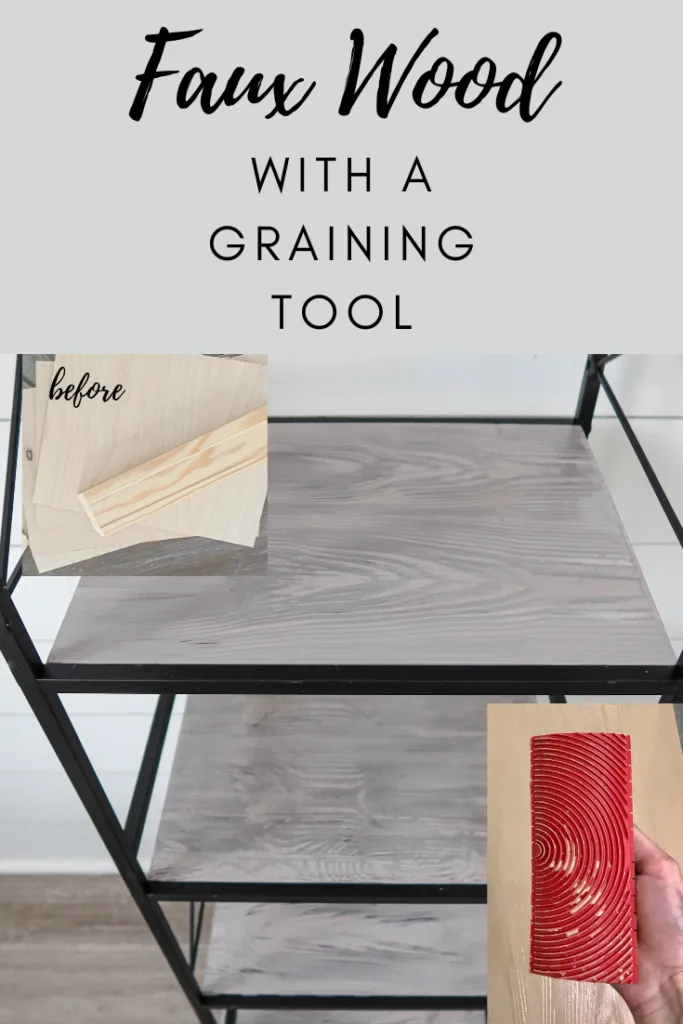
Today I’m sharing how to create a faux wood finish with a graining tool. These tools are awesome and so easy to use IF you know how to use them. Let me show you.
Table of Contents
How to use a wood graining tool for a faux wood paint finish
Using a graining tool doesn’t have to be hard. As a matter of fact, a beginner DIYer can do this!
First you need to decide which medium you want to use.
Disclosure; this post contains affiliate links. As an Amazon Associate I earn from qualifying purchases. This does not affect the price you pay. This disclosure statement refers to the rest of the amazon links and other affiliate links in this post.
What’s the best wood grain tool?
This is ultimately a personal choice. I prefer a smaller grain on the graining tool because I feel like it makes it look more realistic. I’m not a fan of the tools with less grain marks or larger grain patterns because I think (most of the time) you can tell it’s not real.
Types of wood grain tools
There are a few main types of wood grain tools:
- Wood grain roller
- Wood grain rocker
- Wood grain comb
Wood grain roller
The wood grain roller is probably the easiest to use but it gives you the least amount of variation. Often times these rollers come with detachable handles so the actual rubber cylinder can be changed to a different wood grain pattern.
Wood grain rocker
Wood grain rockers are probably the most popular (and most used) of the wood grain tools and allow you to “rock” the tool through paint or glaze as you pull it across the surface. The rocker allows you more variation in the wood pattern than the roller, but it can be a little trickier to use.
Wood grain comb
With a wood grain comb, you have more control over the effect that they produce than say the roller or rocker. These tools often come in a triangular form that have different sized teeth on each of the three sides. This allows you to create various wood grain patterns with just one tool.
Pro tip: In order to get a realistic wood grain look with a variety of wood grain pattern, it’s likely you will need to use more than one wood grain tool.
Where to buy a wood grain tool
You can purchase wood grain tools at most hardware stores and online at places like Amazon and smaller paint and stain companies. Most wood grain tools come as a set of more than one.
The wood grain tool I used is from a set from the company Retique It. You can also find another great affordable wood grain set from Amazon here. When looking to purchase a wood grain set, make sure the surface is curved (so you can rotate it back and forth) and the tool surface is large enough to get a good variety of the wood grain pattern.
Like I said, it’s best to have more than one wood grain tool to get a realistic look.
Can you use stain with a graining tool?
You can use a graining tool with virtually any medium, including stain. Know that stains typically won’t create as prominent of a grain effect unless you are using a stain that sits on the surface like a gel stain.
There is a product called Liquid Wood that infuses small particles of real wood into a paint product. I’ve used this product with a graining tool on an old folding table. I finished it with stain too. It worked beautifully.
I thought about using the Retique It Liquid wood product, but I decided to see what I could create with just paint.
Once you’ve decided on your medium, apply one to two layers on the surface.
Immediately after you apply the paint, start at one end of the surface and hold the rubber graining tool at about a 45 degree angle. Pull the graining tool through the paint (or stain) rocking it back and forth slowly until it reaches the edge of the surface.
Always pull the tool in the direction of the wood grain. If the surface you are applying it to doesn’t have a wood grain, decide the best direction for it. For most vertical surfaces, the wood grain should run vertical and visa versa for horizontal surfaces.
Make one smooth pass with the tool and DON’T pull the graining tool up until you’ve reached the edge.
If you mess up or you don’t like the grain, no big deal. Take your paint brush and brush over the surface and start over again.
Note; for a really cool effect, apply a dark paint first and then a lighter paint on top. You will need to apply the lighter paint to the base coat while it’s still fairly wet. This is something you need to play around with to get the right timing for applying the second coat. The graining tool will pull the dark color out and it makes a really neat color.
What surfaces can you use a wood grain tool on?
As long as you have a paint or stain medium that will adhere to the surface you are trying to apply the wood grain to, any surface should work! You can apply this faux wood grain finish to virtually any type of material.
Like I said earlier, I applied this faux finish to a plastic folding table and it turned out beautifully.
Note; the thicker the paint or stain medium, the more prominent the wood grain will show.
That’s it guys!
Let me show you a few close up views of the faux wood grain after it dried.
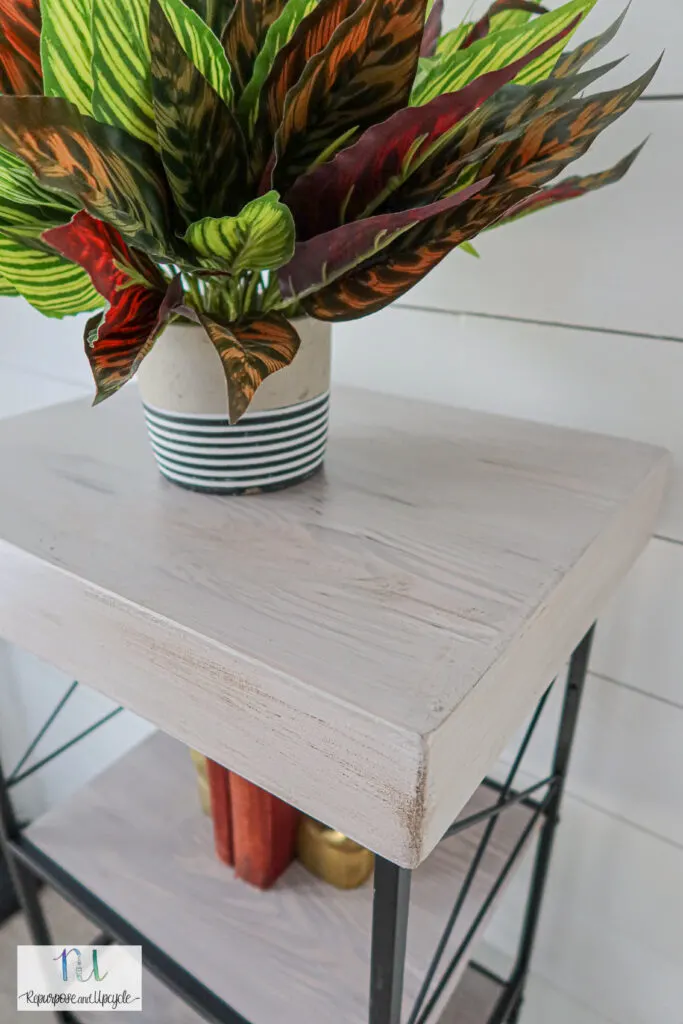
Look how real that wood grain looks! The best part? It actually has texture and feels like wood grain too.
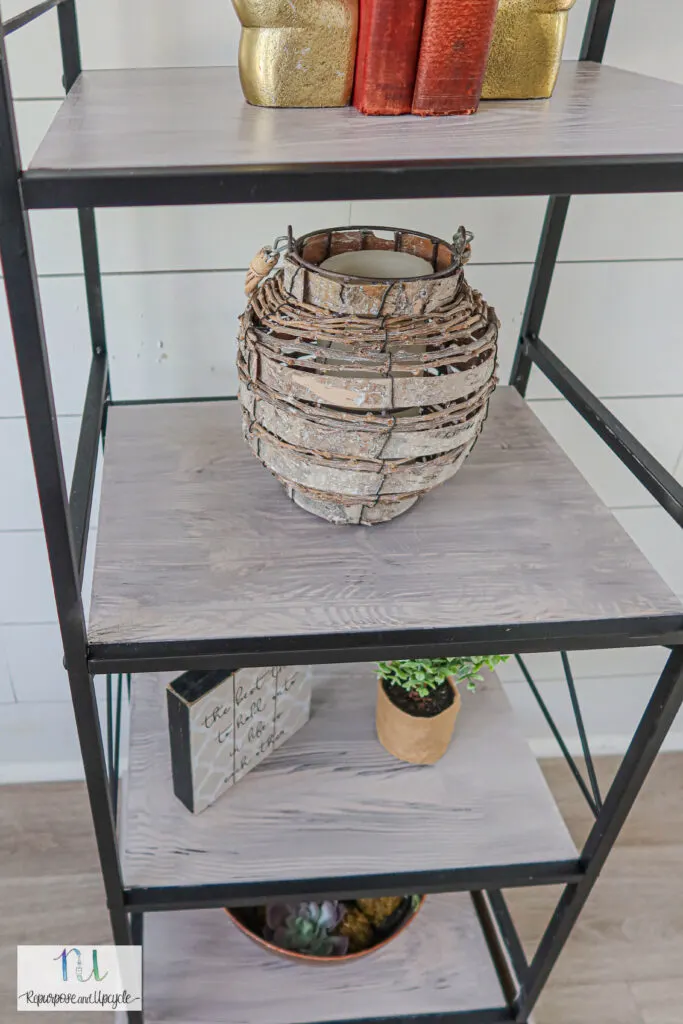

This is only my second time using the graining tool but I can think of lots of other projects I would like to try it on.
Stay tuned!
Happy painting friends,
Lindsey**
How to use a graining tool to get a faux wood Paint finish
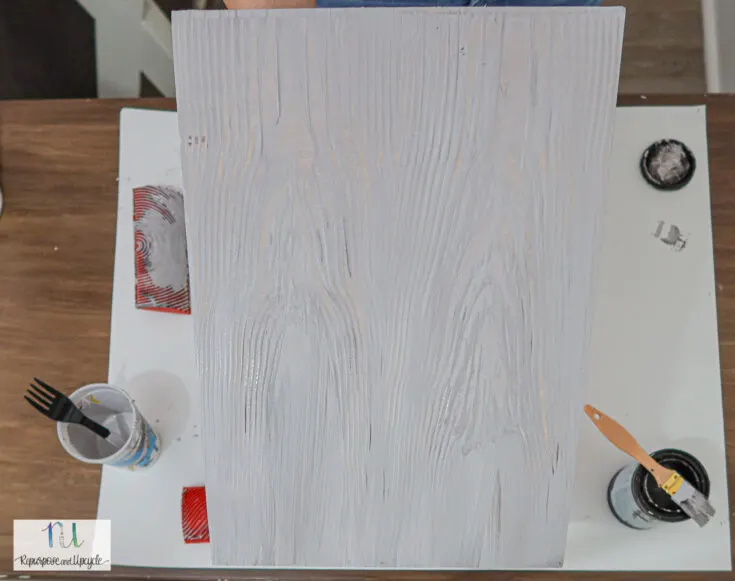
Learn how to create a faux wood finish with a rubber graining tool and paint. You can use this technique on any surface to create a real wood look.
Materials
- Paint or similar medium
- Paint brush
Tools
- Rubber graining tool
Instructions
- Apply a layer of paint to the surface. You can apply different colors or layers of paint.
- Immediately after you apply the paint, start at one end of the surface and hold the rubber graining tool at about a 45 degree angle.
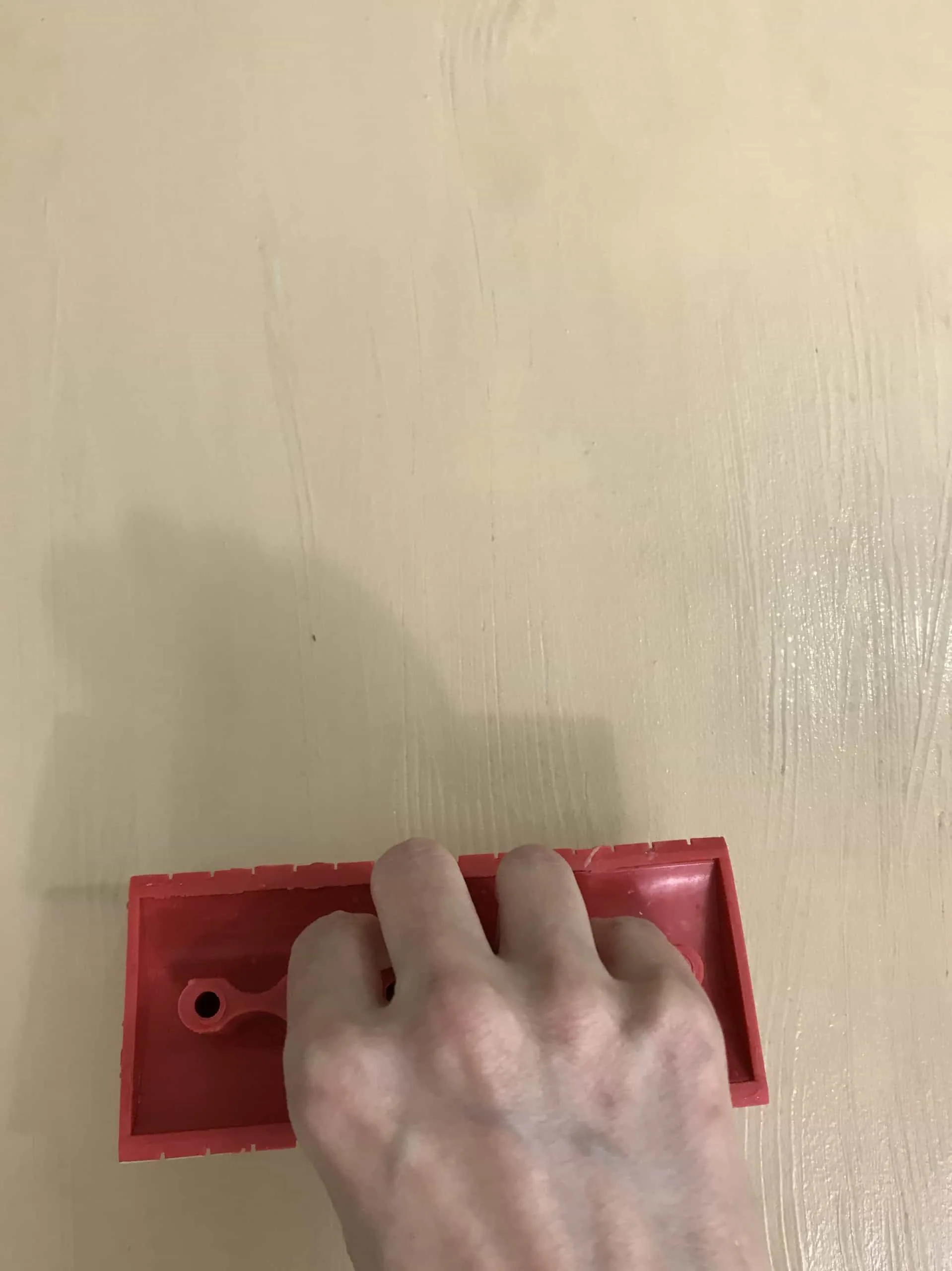
- Pull the tool through the paint and slowly rock the graining tool back and forth in the direction of the wood grain.
- DO NOT raise the graining tool off of the surface until you reach the edge.
- Make another pass with the graining tool by placing the tool close to where you started the first time. Make sure to overlap the grain just a little.
- Make ONE SMOOTH pass with the tool making sure not to raise it until you are at the edge of the surface.
- Continue in this pattern until the entire surface has been covered with the graining tool.
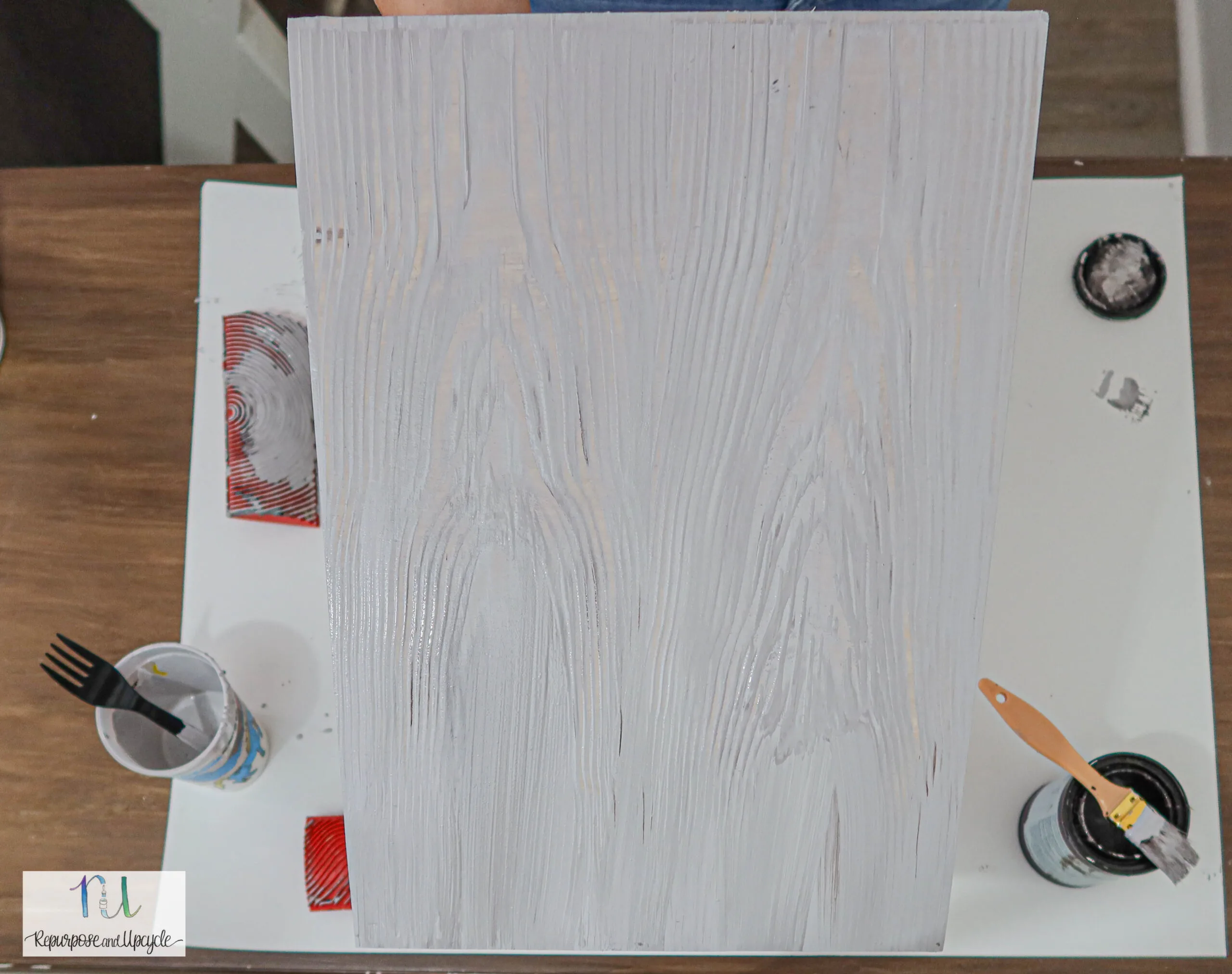
- Mix up how you rock the graining tool to make it look more authentic.
Notes
If you aren't happy with the way the grain looks, simply brush it with a paint brush and start over.
The wood grain pattern will become more prevalent as it dries, so be patient.
For a really cool effect, paint a dark color as the base and a lighter color on the top. When you use the graining tool the dark color will show through.
Determining the direction of the wood grain can be tricky if you aren't applying it to wood. For most vertical surfaces, the wood grain should run vertical and visa versa for horizontal surfaces.
Recommended Products
As an Amazon Associate and member of other affiliate programs, I earn from qualifying purchases.


Do you think this will work on basement stair treads? Will it work with enamel paint? I have primed them& was going to put a base coat on, then another coat& then the top coat& pull it threw with the tool, what do you think? Thanks in advance for your input.
Yes it will work with any paint!
That turned out terrific, good work.